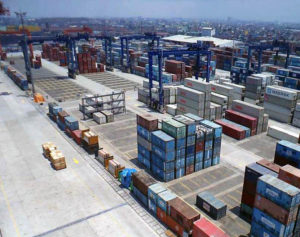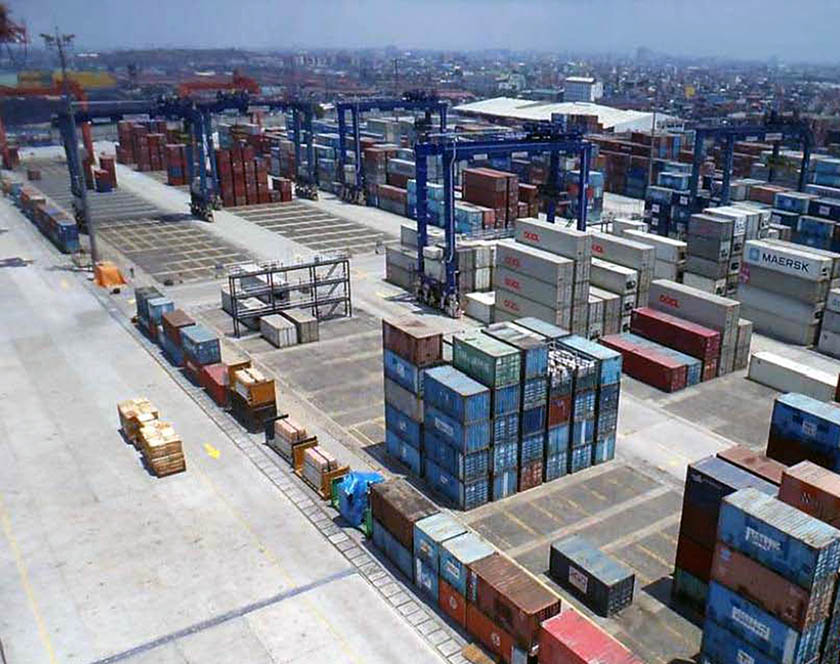 The Philippine Bureau of Customs (BOC) has released a new order containing guidelines on how port operator Manila North Harbour Port, Inc. (MNHPI) should run North Port now that the domestic terminal is allowed to handle and store import, export and transhipment cargoes.
The Philippine Bureau of Customs (BOC) has released a new order containing guidelines on how port operator Manila North Harbour Port, Inc. (MNHPI) should run North Port now that the domestic terminal is allowed to handle and store import, export and transhipment cargoes.
Signed on June 2 by outgoing Customs Commissioner Alberto Lina, Customs Memorandum Order (CMO) No. 12-2016 describes North Harbor (or North Port) as a sub-port of entry of the Manila International Container Port (MICP), giving North Port the legal authority to handle foreign cargoes.
This description of North Harbor, CMO 12-2016 adds, is supported by Executive Order (EO) No. 127 issued in 1987, which reorganized the then Ministry of Finance, and upheld by Customs Administrative Order No. 04-79 dated May 24. 1979 (Activation of the MICP and the Realignment of the North Harbor Branch into a Sub-Port of Entry, Customs District II).
CMO 12-2016 noted that under the Tariff and Customs Code of the Philippines, “a port of entry, which includes a principal port of entry and a sub-port of entry, is open to both foreign and coastwise trade.”
In addition, Sections 4 and 5 of Republic Act No. 10668, or the Foreign Ships Co-Loading Act, grants the Customs Commissioner the power to authorize any foreign vessel to take or convey import or export cargoes at any Philippine port authorized by a government contract to handle domestic, import, or export cargo, the order said.
READ: Implementing rules for PH Co-Loading Act out
Before MNHPI took over the operation and management of North Harbor in 2010, the port had handled foreign cargoes and had its own complement of customs offices. Some of the offices were, however, transferred when MNHPI took over since by then the port no longer processed foreign cargoes, except for transhipments.
Now that North Harbor is again allowed to process foreign shipments, CMO 12-2016 said the processing of vessels engaged in foreign trade, their passengers, as well as all their import, export, and transshipment cargoes and mail matters, will subject to the usual customs formalities and procedures under existing laws, rules and regulations.
Authorized customs facility
Moreover, since MNHPI is also an authorized customs facility (ACF) it must strictly comply with CMO 30-2015, which provides rules for the establishment, supervision, and control of wharves, container yards, container freight stations, warehouses, examination areas and other facilities within the Customs Zone, otherwise known as ACFs.
On December 1, 2015 BOC granted MNHPI a certificate of authority to operate as an ACF, becoming the third terminal operator to become one after it met provisions of CMO 30-2015. The first two were Davao International Container Terminal and Terminal Facilities Services Corp, both based in Davao.
READ: Manila North Port can now handle international cargoes
As an ACF, MNHPI is mandated to install a web-based inventory management system, allocate adequate office space for customs personnel, have security procedures for service providers and vendors, lay down container security integrity and breach detection measures, and provide for personnel and physical facility security.
Under CMO 12-2016, MNHPI will also have to segregate import cargoes, whether bulk or containerized, from local cargoes in a “designated area for security and convenience and pursuant to customs laws, rules and regulations.”
Additionally, MNHPI has to provide ample and contiguous spaces—at no expense to BOC—for the designated examination area (DEA)/Customs Clearance Area; X-ray machines; abandoned/forfeited/seized cargoes; and office for customs personnel, the order said.
The port operator should also provide and maintain a gateway computer and communication lines and communication software through which BOC may transmit the release instructions to MNHPI. BOC and MNHPI must also maintain their own electronic copy of the release instructions and the confirmation/revision notices.
Customs personnel, in performing their official functions, should be given full access to the port, its facilities, sheds, and warehouses.
At the same time, the organizational structure, statement of functions, and staffing pattern for the Sub-Port of North Harbor as set forth in EO 127 should be observed. If the plantilla positions for the sub-port are vacant, the Customs commissioner or the district collector of MICP will assign customs personnel to process or clear import, export, and transshipment entries within 15 days of the issuance of CMO 12-2016 so the port can operate effectively.
The new order directed BOC’s Management Information System and Technology Group to register MNHPI with the Client Profile Registration System, and to assign a port code for the sub-port of North Harbor so that MNHPI can send and receive Online Release System messages through a selected value-added service provider.
All processing, subject to the usual customs formalities and procedures under existing laws, rules and regulations, will be conducted at the principal port of MICP until such time the personnel complement at the sub-port of North Harbor is filled up.
Richard Barclay, chief executive officer of MNHPI, earlier said they will comply with all provisions prescribed by the customs agency in order to process foreign containers.
He noted MNHPI will “not jeopardize the domestic volumes” entering the port and assured that the terminal has the capacity to handle all types of shipments.
North Port’s annual capacity is two million twenty-foot equivalent units (TEUs) but so far handles an average one million TEUs yearly.
With North Port being allowed to handle foreign cargoes, Barclay said shippers can save on hustling costs as they can transport their transhipment containers from the international ports to North Port. Foreign containers can also be transferred berth to berth from a foreign vessel to a domestic vessel, Barclay said. – Roumina Pablo





